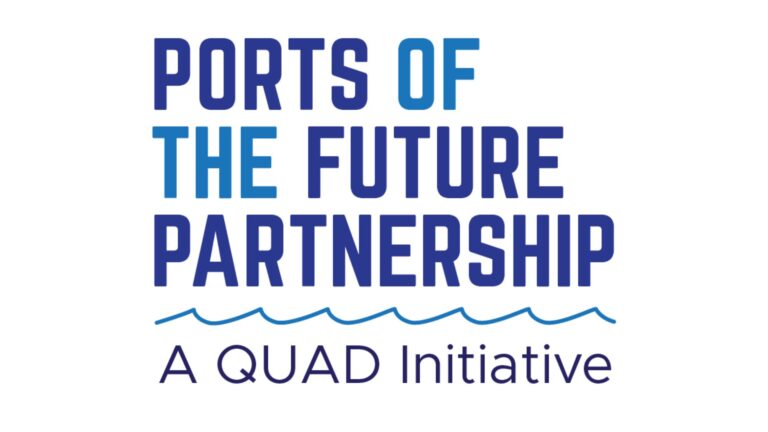Deep Water, Deep Stakes: Why Undersea Tech will shape the next era of Ports and Power
Ports are no longer just break-bulk and boxes. The “port of the future” is a data and energy hub knitted to seabed cables, offshore renewables, autonomous vessels, and fleets of underwater robots that inspect, map, and secure the maritime commons. The oceans are no longer just trade routes—they are the next frontier of data, energy, and security. The global market for undersea technology is accelerating , while underwater robotics market is projected to reach US $12 billion by 2033, driven by offshore renewables, maritime security, and data demand. For India—sitting at the crossroads of the Indian Ocean’s busiest sea-lanes—this is more than infrastructure; it’s a chance to leverage its talent, research base, and geography to seize a share of this booming market. Understanding these stakes is crucial: the ports that embrace undersea technology today will shape the future balance of power, trade, and resilience tomorrow.
Ports are becoming seabed hubs. Beneath every efficient harbor sits a web of fiber‑optic cables, power interconnectors, moorings, outfalls, and quay‑wall structures that must be mapped, inspected, and protected with the same rigor applied to cranes and terminals. The stakes are high: over 95% of international data and voice move through subsea cables, so a single break can ripple through trade, finance, and port operations. Incidents like the September 2022 Nord Stream explosions—still spawning legal proceedings and fresh reporting—brought home how fragile seabed infrastructure can be and how quickly failures propagate above the waterline. The next gains in port resilience, efficiency, and security will therefore come from what we can see and do under the surface.
Underwater robots are the workhorses of this shift. Two categories dominate: autonomous underwater vehicles (AUVs) and remotely operated vehicles (ROVs). An AUV is an untethered robot that follows a pre‑planned mission and returns with data; it’s the subsea equivalent of an aerial survey drone. An ROV is a tethered robot steered in real time via an umbilical, ideal for close‑in inspection and light intervention at hulls, pilings, and connectors. The distinction is simple but powerful for port leaders: AUVs deliver fast, repeatable, high‑resolution coverage of channels, anchorages, and cable corridors; ROVs provide eyes, measurements, and manipulator reach where the work is tight and complex.
That division of labor is already reshaping standard operating procedures. Hydrographic AUV surveys de‑risk dredging by revealing high spots, sediment movement, and hazards before the cutter head arrives, while quay‑wall inspections with compact ROVs pick up scours, voids, and corrosion that would otherwise trigger unplanned closures. Biofouling—slime and growth that add drag—can drive up fuel consumption dramatically; that’s why hull‑inspection and hull‑cleaning robots are moving from pilots to practice. At Rotterdam’s Vopak terminals, a purpose‑built, ATEX‑certified hull‑cleaning robot now operates safely next to tankers during cargo ops, vacuum‑capturing residues and avoiding off‑hire, a concrete example of how subsea automation saves time, fuel, and emissions.
The technology frontier is advancing just as fast. Long‑endurance AUVs have broken out of day‑trip mode. Kongsberg’s HUGIN Endurance is engineered for unsupervised, shore‑to‑shore missions with deep‑rated payloads—including the company’s HISAS synthetic aperture sonar—for multi‑week dives on the order of ~1,200 nautical miles, which is enough to sweep entire approaches or follow interconnectors without a mothership. In 2024–25 demonstrations it completed record‑length, fully autonomous sorties at depth, underscoring what “persistent” now means underwater.
In the medium class, HII’s REMUS 620 adds plug‑and‑play modularity with up to 110 hours of endurance and roughly 275 nautical miles per mission, a sweet spot for harbor security, infrastructure inspection, and mine countermeasures around channel entries.
Equally important is the rise of resident robots: Saab’s Sabertooth hybrid AUV/ROV can dock on the seabed, recharge, upload data, download new tasks, and remain on station for more than six months—ready to switch from autonomous inspection to tethered intervention in minutes. Deployed near critical nodes—cable landings, power junctions, or high‑value berths—resident systems compress response times from days to minutes.
Sensors and autonomy are maturing in parallel. Modern synthetic aperture sonar (SAS) produces crisp, centimeter‑class imaging at useful ranges and steady area‑coverage rates, which is why it now underpins cable and pipeline inspection workflows across offshore energy. Magnetometer‑equipped AUVs can localize buried or poorly charted power cables to feed along‑cable navigation, and new algorithms are tackling cable‑tracking when routes and vehicle navigation both carry uncertainty—a routine reality in dynamic ports. These improvements are not academic; they are being integrated into pier‑launched or shore‑launched AUV demonstrations for real power‑export cables, with field programs focused specifically on anomaly detection and continuous monitoring.
Another enabler is the rise of uncrewed surface vessels (USVs) as “motherships” for subsea robots. Systems like Exail’s DriX can deploy and track AUVs, or run their own multibeam and fisheries payloads, while streaming results to shore. The operational and environmental math changes quickly when a USV replaces a large crewed platform: NOAA trials and research missions with DriX have shown how uncrewed assets can act as survey force multipliers, with reporting that CO₂ emissions are a fraction of conventional vessels on comparable tasks. In practical terms, that means more survey hours, fewer crewed vessel days, and tighter windows for inspections around busy terminals.
For India, the subsea toolchain is no longer hypothetical. The National Institute of Ocean Technology’s ROSUB‑6000 is a domestically developed, deep‑water work‑class ROV rated to 6,000 m and proven in Central Indian Ocean trials; while its scientific brief is deep ocean, the engineering—materials, control, manipulators—spills into coastal and port tasks. On the autonomous side, DRDO’s High‑Endurance AUV has moved through surface runs and lake trials in 2024–25, signaling a path toward long‑range survey platforms that could be tasked for channels, anchorages, and cable routes. And in the commercial ecosystem, firms like Planys Technologies are already delivering quay‑wall, jetty, and intake inspections with indigenous ROVs and AI‑enabled workflows, building a base of operators, data standards, and trust with port engineers. These capabilities form a credible foundation for a layered, sovereign subsea capacity.
The subsea edge is up for grabs. For ports, the macro‑benefits cluster around resilience, efficiency, and decarbonization. Routine robotic inspections shrink time‑to‑detect and time‑to‑repair on cables and quay walls, which limits service disruptions and reputational damage when something breaks. Biofouling management with robotic inspection and cleaning directly tackles fuel burn and GHGs—industry and port sources cite double‑digit percentage penalties in bad cases—making hull condition a straightforward energy‑efficiency lever that doesn’t wait on new fuels. And switching survey hours from big ships to AUVs and USVs is a measurable way to cut emissions while improving data density. The international cable‑reliance stat is not a scare line—it’s the connective tissue between ports and power—so the operators who can “see, decide, and act” fastest under the waterline will capture the competitive advantage above it.
A pragmatic to‑do list for port leaders can be executed without drama: start by commissioning a baseline AUV survey of channels, anchorages, and known or suspected cable and pipeline corridors, then establish a routine cadence so change detection becomes normal rather than exceptional; fold compact inspection ROVs into day‑to‑day berth and quay‑wall checks to reduce diver exposure, document defects earlier, and streamline maintenance approvals; adopt robotic hull inspection and cleaning as a standard operational KPI, using certified systems that can safely operate alongside tankers during cargo operations to avoid downtime and capture residues; pilot a USV‑launched AUV workflow to cut crewed vessel days and expand survey windows, and use those pilots to set data standards—formats, metadata, quality thresholds—that flow cleanly into the port’s digital twin and asset‑management tools; develop rapid‑response call‑off contracts for subsea incidents so cable or pipeline anomalies trigger a familiar playbook, not ad‑hoc scrambling; and grow local capability by partnering with domestic ROV/AUV firms and labs so sensitive seabed data stays sovereign while the skills base scales. Taken together, these actions build a layered, repeatable subsea operation that supports safety, uptime, and competitiveness.
The bottom line is simple: undersea technology is no longer a niche—it is the connective tissue between ports and power. AUVs, ROVs, resident robots, and USV “motherships” are mature enough to move out of pilots and into procurement cycles, and the return is visible in fewer surprises, faster interventions, and lower operating and carbon costs. The ports that treat the seabed as essential infrastructure—and make subsea data as routine as berth throughput—will be the ones that shape the next era of maritime competitiveness.























